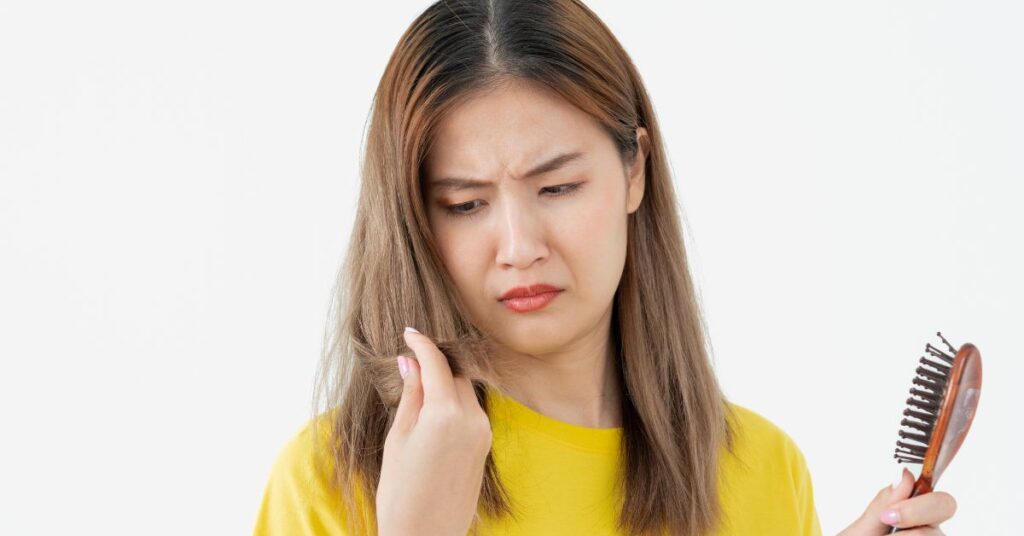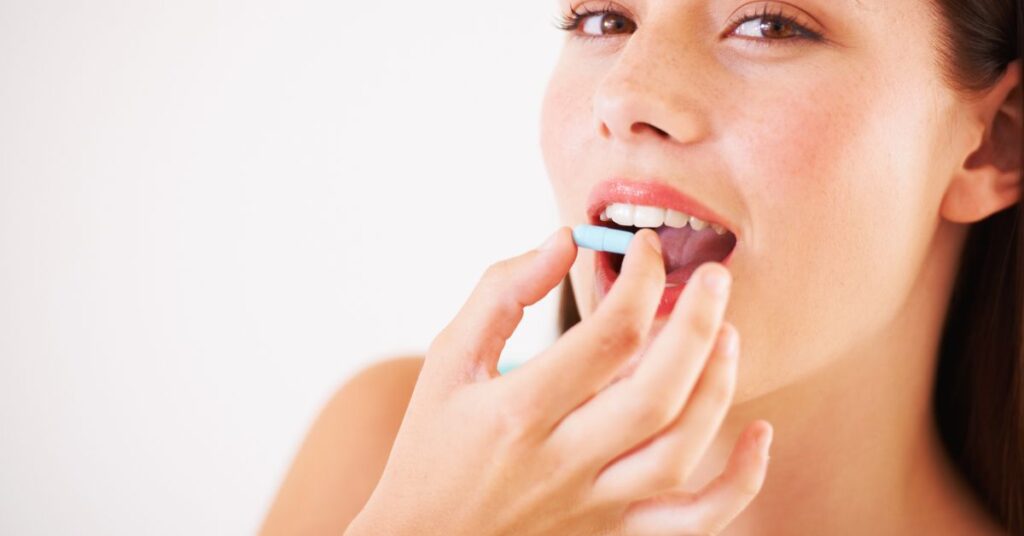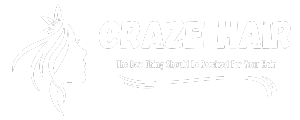
Introduce
Welcome to our guide on maintaining healthy hair during the summer months. As the temperature rises, so do the challenges for your hair. From the scorching sun to the drying effects of chlorine and saltwater, summer can take a toll on your locks. In this article, we’ll explore five essential tips to help you keep your hair looking and feeling its best all season long. Let’s dive in! 5 tips for healthy hair.
Understanding Summer Hair Care Needs:
Summer brings with it a unique set of challenges for hair care. The combination of heat, humidity, and increased sun exposure can wreak havoc on your locks. Understanding these specific needs is crucial for effectively caring for your hair during the summer months.
Introduction to Summer Hair Challenges:
During summer, your hair is exposed to various elements that can cause damage and dryness. The intense heat can strip moisture from your strands, leaving them brittle and prone to breakage. Additionally, high humidity levels can lead to frizz and unruly hair.
Effects of Sun Exposure:
The sun’s UV rays can be particularly harmful to your hair. Prolonged exposure can weaken the hair shaft, leading to dryness, split ends, and loss of elasticity. Light-colored or chemically treated hair is especially susceptible to sun damage.
Impact of Humidity:
Humidity can cause your hair to swell and become frizzy, especially for those with naturally curly or wavy hair. Excess moisture in the air can also make it difficult for your hair to retain its style, leading to frustration and the need for frequent restyling.
Chlorine and Saltwater Damage:
Swimming is a popular summer activity, but the chlorine in pools and saltwater in the ocean can be harsh on your hair. Chlorine strips away natural oils, leaving your hair dry and brittle. Saltwater can also dehydrate your strands, leading to rough texture and tangles.
Hydration and Moisture Balance:
Maintaining proper hydration and moisture balance is crucial for healthy hair, especially during the summer when the heat can be particularly drying. Here’s a detailed look at how you can keep your hair hydrated and balanced:

Importance of Hydration:
Just like your body, your hair needs adequate hydration to stay healthy and vibrant. Dehydration can lead to dry, brittle hair that is more prone to breakage and split ends. Therefore, ensuring your hair receives enough moisture is essential for maintaining its strength and elasticity.
Tips for Hydration:
- Drink plenty of water: Hydration starts from within, so be sure to drink enough water throughout the day to keep your body and hair hydrated.
- Use a moisturizing shampoo and conditioner: Look for products specifically formulated to hydrate and nourish dry hair. Ingredients like coconut oil, shea butter, and hyaluronic acid can help lock in moisture and prevent dehydration.
- Deep condition regularly: Treat your hair to a weekly deep conditioning treatment to replenish moisture and repair damage. Choose a hydrating mask or oil treatment and leave it on for at least 20 minutes before rinsing thoroughly.
- Avoid over-washing: Washing your hair too frequently can strip away its natural oils, leading to dryness and damage. Aim to wash your hair no more than every other day or as needed, and use a gentle, sulfate-free shampoo.
Maintaining Moisture Balance:
In addition to hydrating your hair, it’s essential to maintain a proper moisture balance to prevent it from becoming too dry or too oily. Here are some tips for achieving moisture balance:
- Use a leave-in conditioner: Apply a lightweight leave-in conditioner to damp hair to help lock in moisture and keep it hydrated throughout the day.
- Limit heat styling: Excessive heat styling can strip moisture from your hair, so try to minimize the use of hot tools like blow dryers, straighteners, and curling irons. If you must use heat, always use a heat protectant spray to minimize damage.
- Protect your hair from the sun: UV rays can dehydrate your hair and cause it to become dry and brittle. Wear a hat or use a UV-protectant spray to shield your hair from the sun’s harmful rays.
Sun Protection for Hair:
Protecting your hair from the sun’s harmful UV rays is essential for maintaining its health and preventing damage. Here’s a detailed guide on how to shield your hair from sun exposure:
Understanding Sun Damage:
UV rays can penetrate the outer layer of your hair, known as the cuticle, and damage the proteins that give your hair its strength and elasticity. Over time, this can lead to dryness, brittleness, and breakage, as well as fading of hair color.
Strategies for Sun Protection:
- Wear a hat or scarf: Covering your hair with a hat or scarf is one of the most effective ways to protect it from the sun. Choose a wide-brimmed hat or a lightweight scarf made from UV-protective fabric for maximum coverage.
- Use UV-protectant products: Look for hair care products, such as leave-in conditioners, sprays, and serums, that contain UV filters to shield your hair from the sun’s rays. Apply these products liberally before heading outdoors, and reapply as needed throughout the day.
- Opt for protective hairstyles: Updos and braided hairstyles can help shield your hair from direct sun exposure. Experiment with different styles, such as buns, ponytails, and braids, to find one that works for you.
- Avoid midday sun: The sun’s rays are strongest between 10 a.m. and 4 p.m., so try to limit your time outdoors during these hours. If you must be outside, seek shade whenever possible, and wear a hat or scarf to protect your hair.
- Rinse after swimming: Chlorine and saltwater can exacerbate sun damage, so be sure to rinse your hair with fresh water after swimming to remove any residue. Follow up with a moisturizing conditioner to replenish lost hydration.
Additional Tips for Sun Protection:
- Protect your scalp: Don’t forget to protect your scalp from the sun’s rays as well. Part your hair in different directions to expose different areas of your scalp to the sun, and apply sunscreen to any exposed areas.
- Consider hair accessories: Hair accessories like headbands, scarves, and hats can not only protect your hair from the sun but also add a stylish touch to your summer look.
Gentle Cleansing and Scalp Care:
During the summer months, proper cleansing and scalp care are essential for maintaining a healthy scalp and vibrant hair. Here’s a detailed look at how you can care for your scalp and cleanse your hair gently:
Summer-Specific Scalp Concerns:
- Increased sweat and oil production: The heat and humidity of summer can lead to excess sweat and oil production on the scalp, which can contribute to scalp buildup and odor.
- Sunburn on the scalp: Excessive sun exposure can also lead to sunburn on the scalp, causing redness, irritation, and discomfort.
Tips for Gentle Cleansing:
- Use a mild shampoo: Choose a gentle, sulfate-free shampoo formulated for your hair type to cleanse your hair without stripping away its natural oils. Look for ingredients like tea tree oil or peppermint oil, which can help soothe and refresh the scalp.
- Wash your hair regularly: During the summer, you may need to wash your hair more frequently to remove sweat, oil, and sunscreen buildup. Aim to wash your hair every other day or as needed to keep your scalp clean and refreshed.
- Focus on the scalp: When shampooing, focus on massaging the shampoo into your scalp to remove dirt, oil, and product buildup. Use your fingertips to gently massage the scalp in circular motions, being careful not to scrub too vigorously, which can irritate the scalp.
Scalp Care Tips:
- Exfoliate the scalp: Regular scalp exfoliation can help remove dead skin cells, oil, and product buildup, promoting a healthier scalp and better hair growth. Use a scalp scrub or a gentle exfoliating brush to massage the scalp and stimulate circulation.
- Moisturize the scalp: After cleansing, follow up with a lightweight, moisturizing conditioner to hydrate the scalp and hair. Focus on applying the conditioner to the lengths and ends of your hair, avoiding the scalp if you have oily hair.
- Protect the scalp from the sun: Just like your skin, your scalp can also get sunburned, especially if you have thin or fine hair. Wear a hat or apply sunscreen to your scalp to protect it from the sun’s harmful UV rays.
Avoiding Heat Styling:
Heat styling tools like blow dryers, flat irons, and curling wands can cause significant damage to your hair, especially during the summer when the heat and humidity are already stressing your locks. Here’s how to minimize heat styling and protect your hair:
Understanding the Effects of Heat Styling:
- Heat damage: Excessive heat can strip moisture from your hair, leaving it dry, brittle, and prone to breakage.
- Frizz and damage: Heat styling can exacerbate frizz and damage, especially in humid conditions, leading to unruly hair that’s difficult to manage.
- Color fading: High heat can cause hair color to fade more quickly, resulting in dull, lackluster locks.
Alternatives to Heat Styling:
- Air-drying: Embrace your hair’s natural texture by allowing it to air dry whenever possible. After washing your hair, gently squeeze out excess water with a towel, then let your hair air dry naturally. Avoid rubbing your hair with a towel, as this can cause friction and damage.
- Heatless styling methods: Experiment with heatless styling methods like braids, twists, buns, and rollers to achieve a variety of hairstyles without using heat. These methods can create beautiful, heat-free curls, waves, and updos while minimizing damage to your hair.
- Overnight styling: Try styling your hair overnight to achieve effortless waves or curls without using heat. Braid your hair before bed for loose waves, or twist it into a bun for soft, natural-looking curls in the morning.
Tips for Minimizing Heat Damage:
- Use heat protectant products: Before using heat styling tools, apply a heat protectant spray or serum to your hair to create a barrier against heat damage. Choose products that contain ingredients like silicone or argan oil, which can help shield your hair from high temperatures.
- Lower heat settings: When using heat styling tools, opt for lower heat settings whenever possible to minimize damage. Start with the lowest heat setting and gradually increase the temperature if needed, being careful not to exceed the recommended temperature for your hair type.
- Limit heat styling: Try to minimize the use of heat styling tools, especially during the summer when your hair is already exposed to environmental stressors. Instead, embrace heatless styling methods and air-dry your hair whenever possible to reduce damage and maintain its health and vitality.

Conclusion
In conclusion, maintaining healthy hair during the summer requires a combination of care, protection, and gentle treatment. By understanding the specific challenges that summer poses to your hair, such as sun exposure, humidity, and chlorine/saltwater damage, you can implement effective strategies to keep your locks looking their best. From hydrating and protecting your hair from the sun to avoiding excessive heat styling and embracing heatless alternatives, there are many ways to promote hair health and vitality throughout the season. By incorporating these tips into your summer hair care routine, you can enjoy strong, vibrant hair that shines all summer long. So go ahead, embrace the warmth of the season, and let your hair radiate with health and beauty.read more
FAQs (Frequently Asked Questions) for Summer Hair Care:
1. How often should I wash my hair during the summer?
- The frequency of hair washing during the summer can vary depending on your hair type and activity level. If you find yourself sweating more or spending a lot of time outdoors, you may need to wash your hair more frequently to remove sweat, oil, and sunscreen buildup. Aim to wash your hair every other day or as needed to keep your scalp clean and refreshed.
2. Can I still use heat styling tools during the summer?
- While it’s best to minimize the use of heat styling tools during the summer to prevent damage, you can still use them occasionally if necessary. Just be sure to use a heat protectant spray or serum before styling, and opt for lower heat settings whenever possible to minimize damage.
3. How can I protect my hair from chlorine and saltwater damage?
- To protect your hair from chlorine and saltwater damage, rinse your hair with fresh water before swimming to saturate the hair shaft and minimize absorption of chlorine or salt. After swimming, rinse your hair again with fresh water to remove any residual chlorine or salt, and follow up with a moisturizing conditioner to replenish lost hydration.
4. What hairstyles are best for protecting my hair during the summer?
- Protective hairstyles like braids, twists, buns, and updos are great options for shielding your hair from the sun and minimizing damage. These styles help to keep your hair off your face and neck, reducing exposure to the sun’s harmful UV rays and minimizing frizz and damage caused by humidity.
5. How can I prevent my hair color from fading in the sun?
- To prevent your hair color from fading in the sun, wear a hat or scarf to shield your hair from direct sunlight whenever possible. You can also use hair care products specifically formulated for color-treated hair, such as UV-protectant sprays or leave-in conditioners, to help preserve your color and prevent fading.
6. Is it important to moisturize my scalp during the summer?
- Yes, moisturizing your scalp is important year-round, including during the summer months. Excessive sun exposure and sweating can dry out the scalp, leading to irritation and discomfort. Use a lightweight, moisturizing scalp serum or oil to hydrate and nourish your scalp, and be sure to protect it from the sun with a hat or sunscreen.

